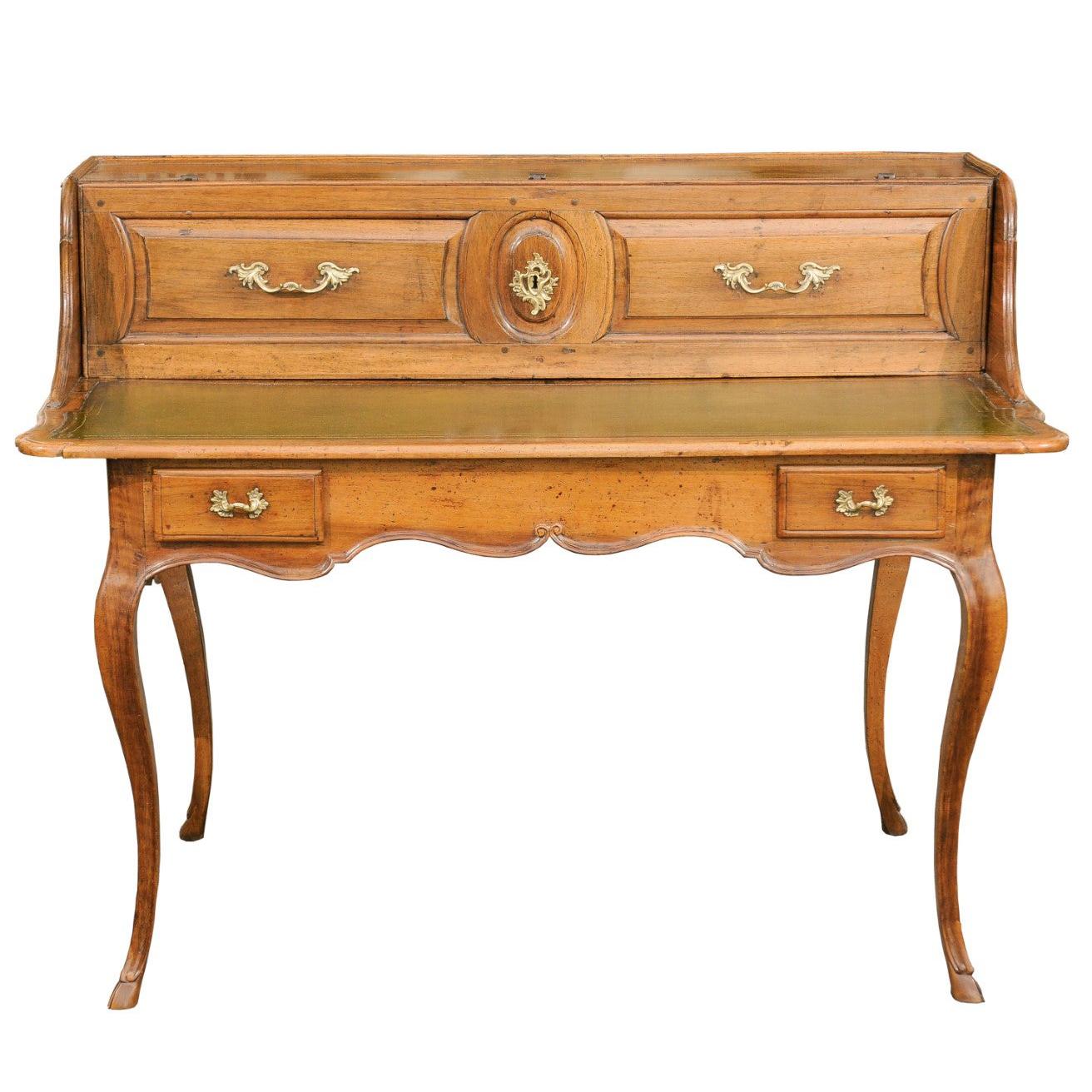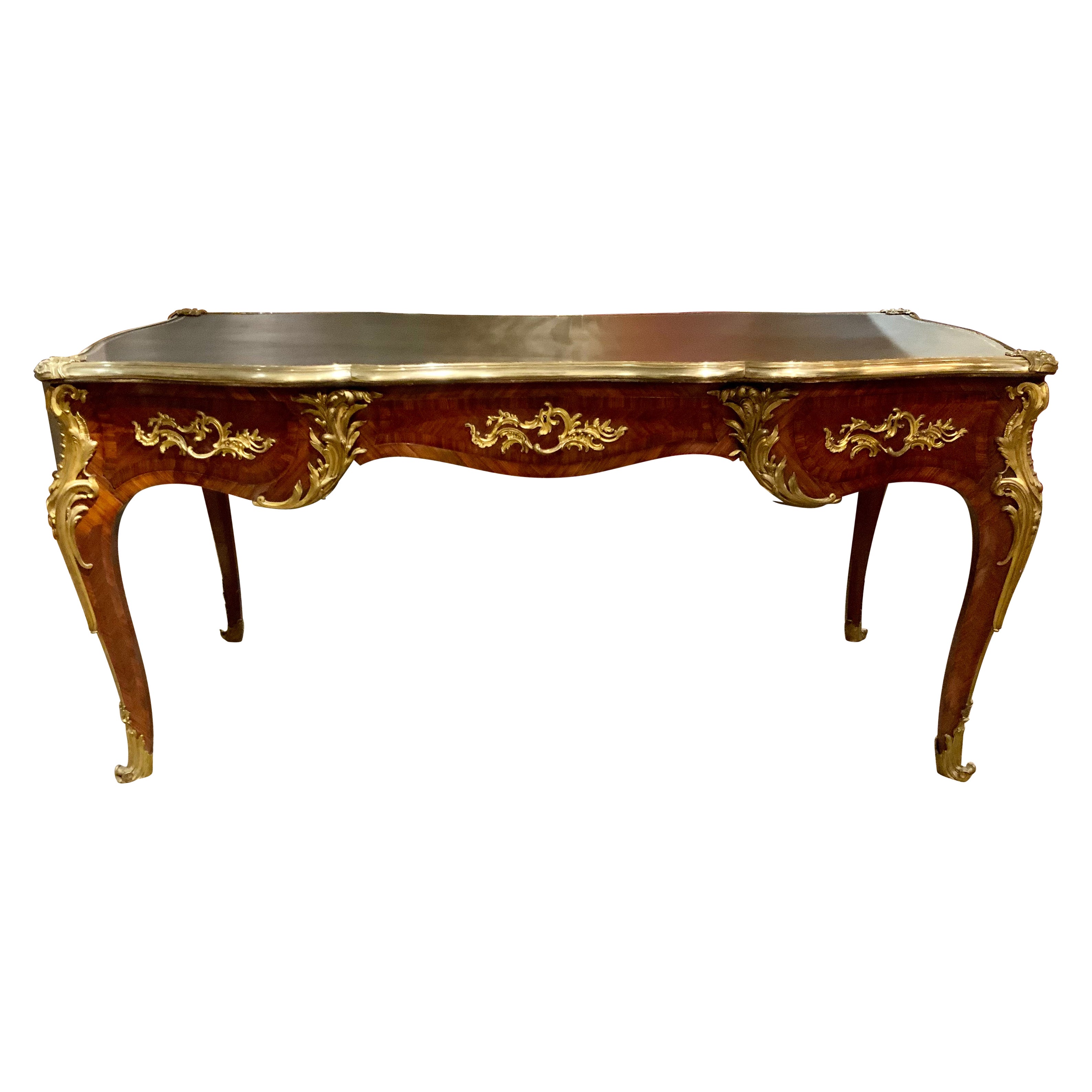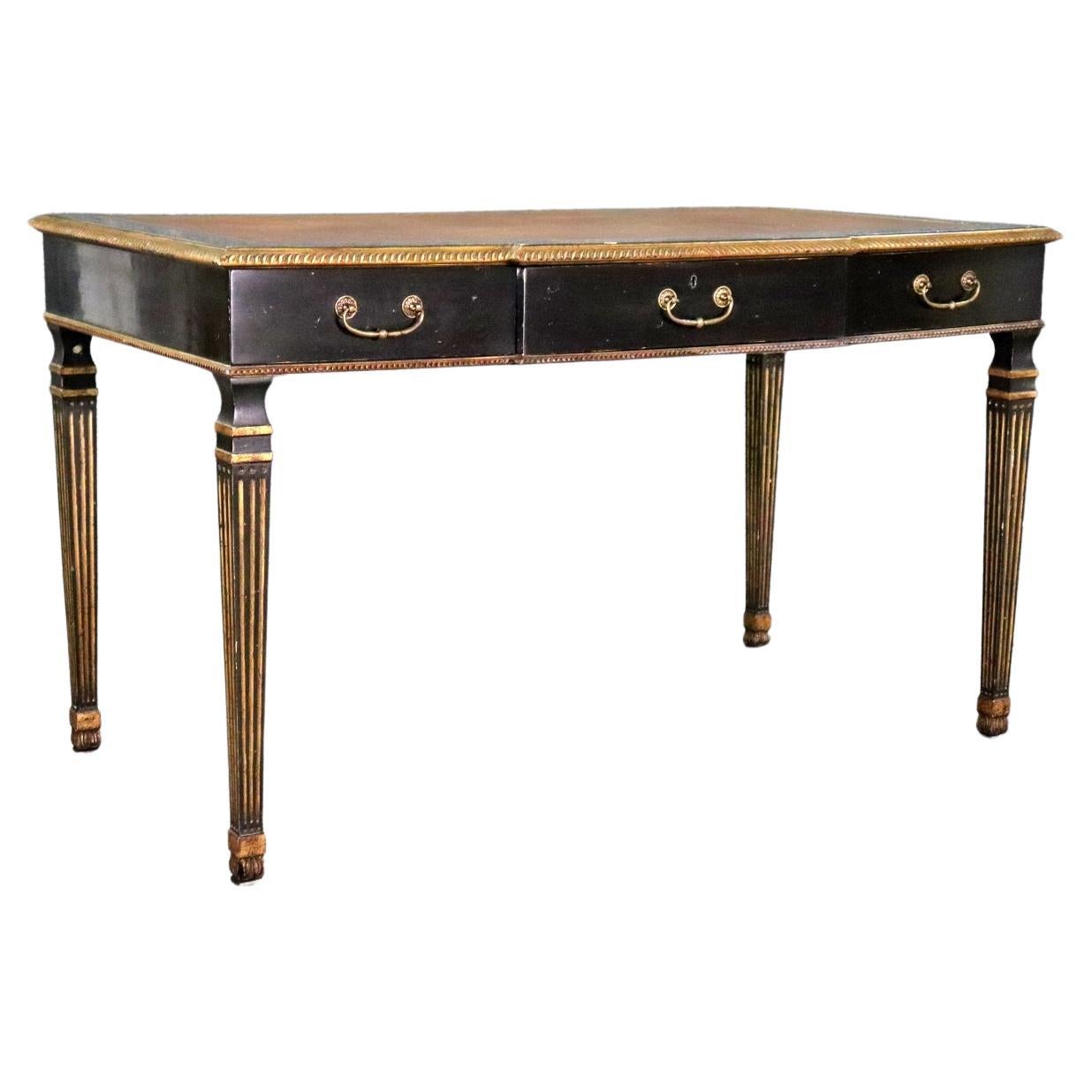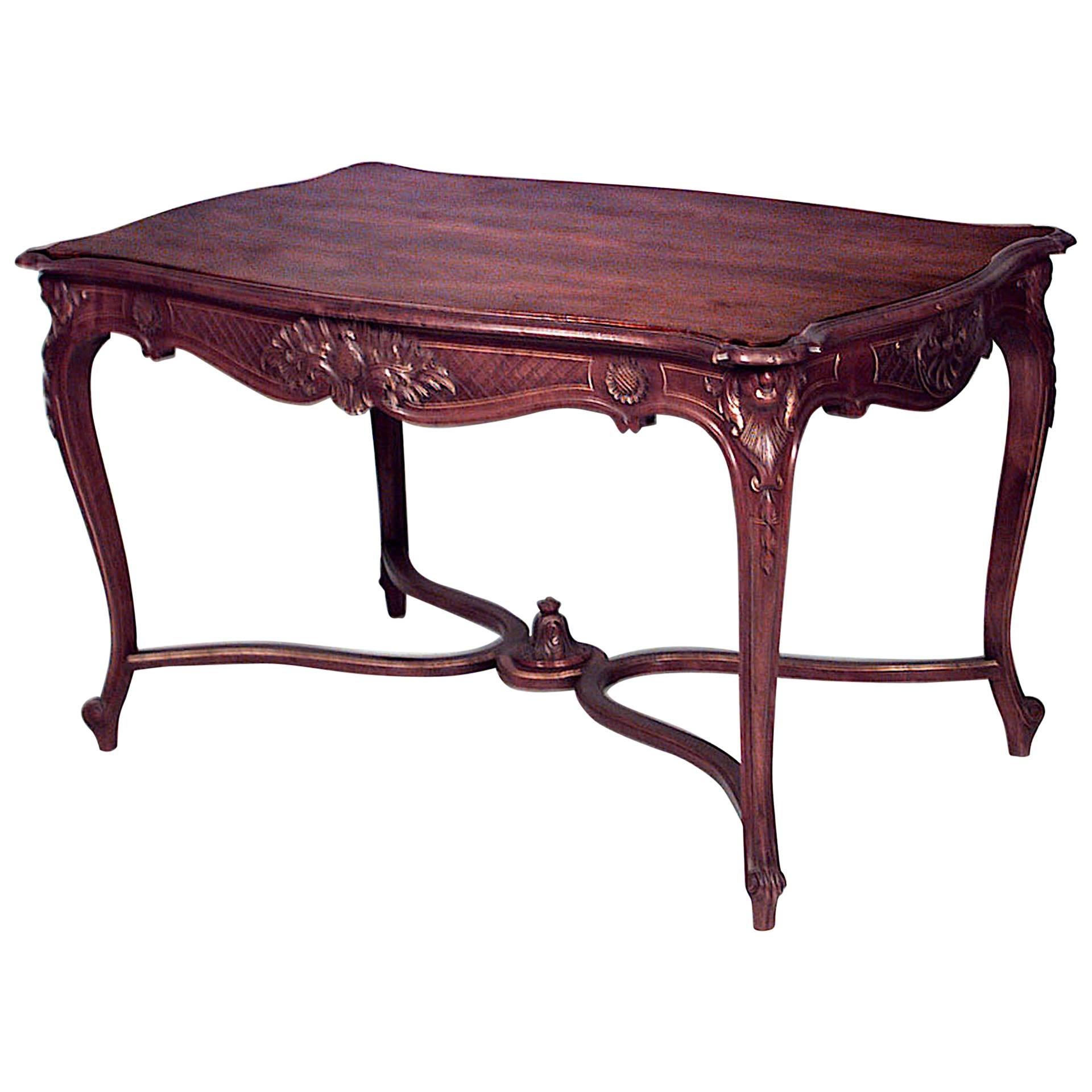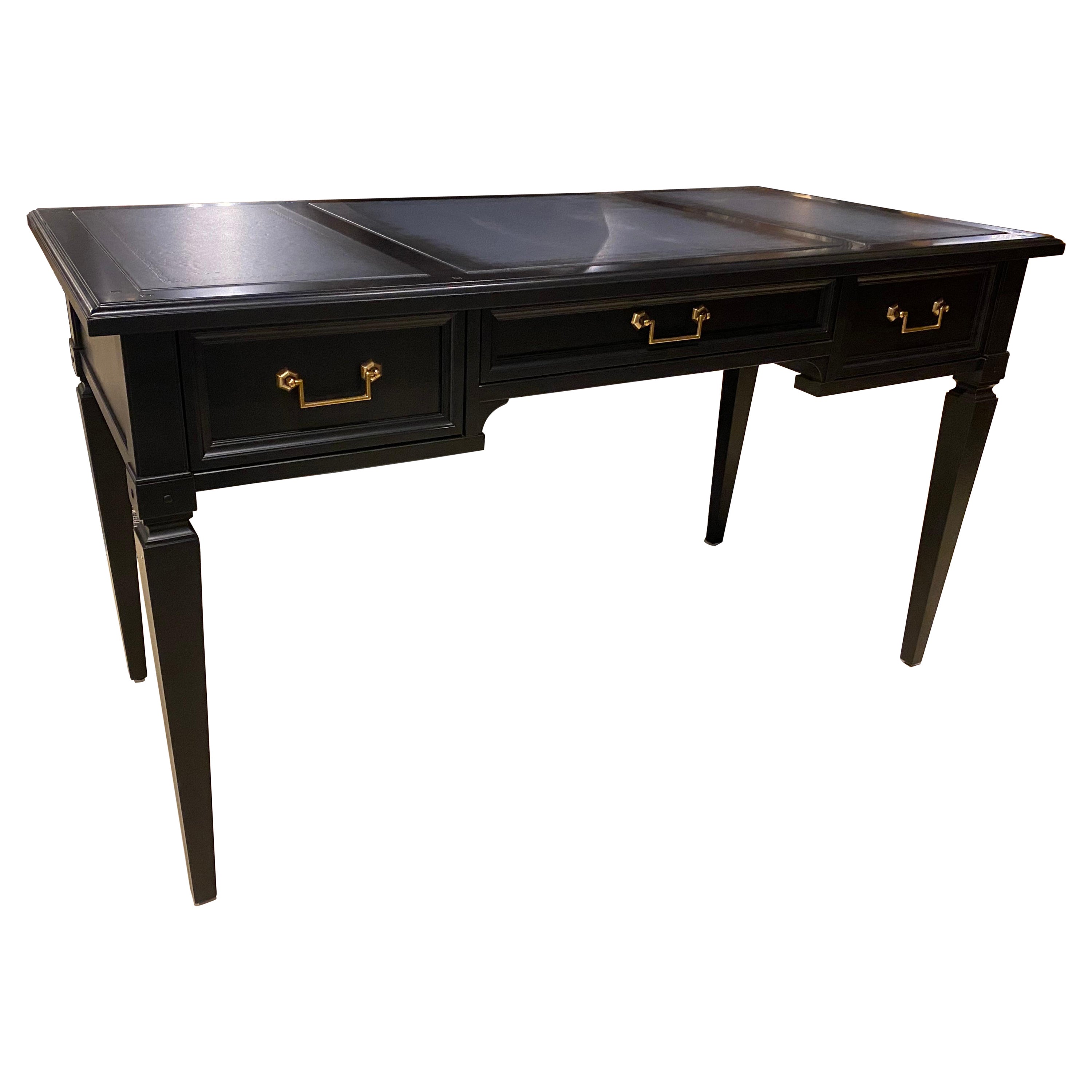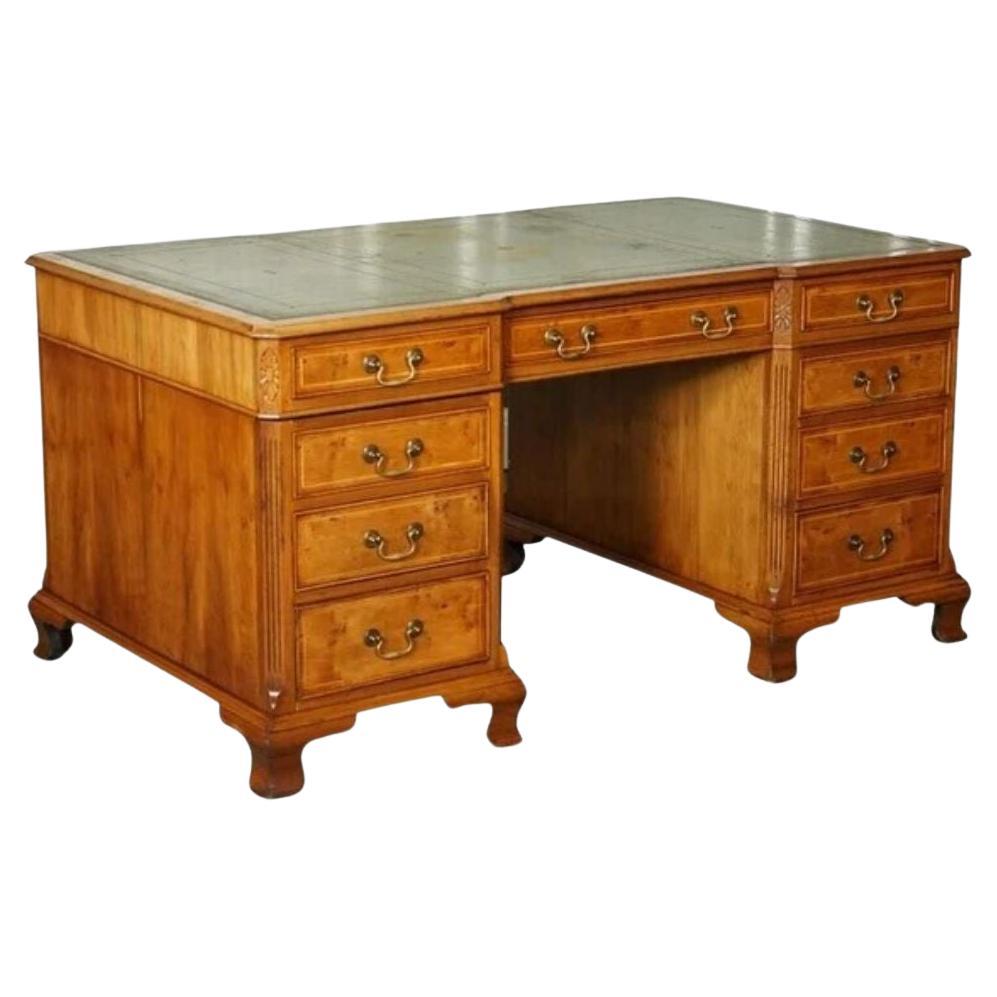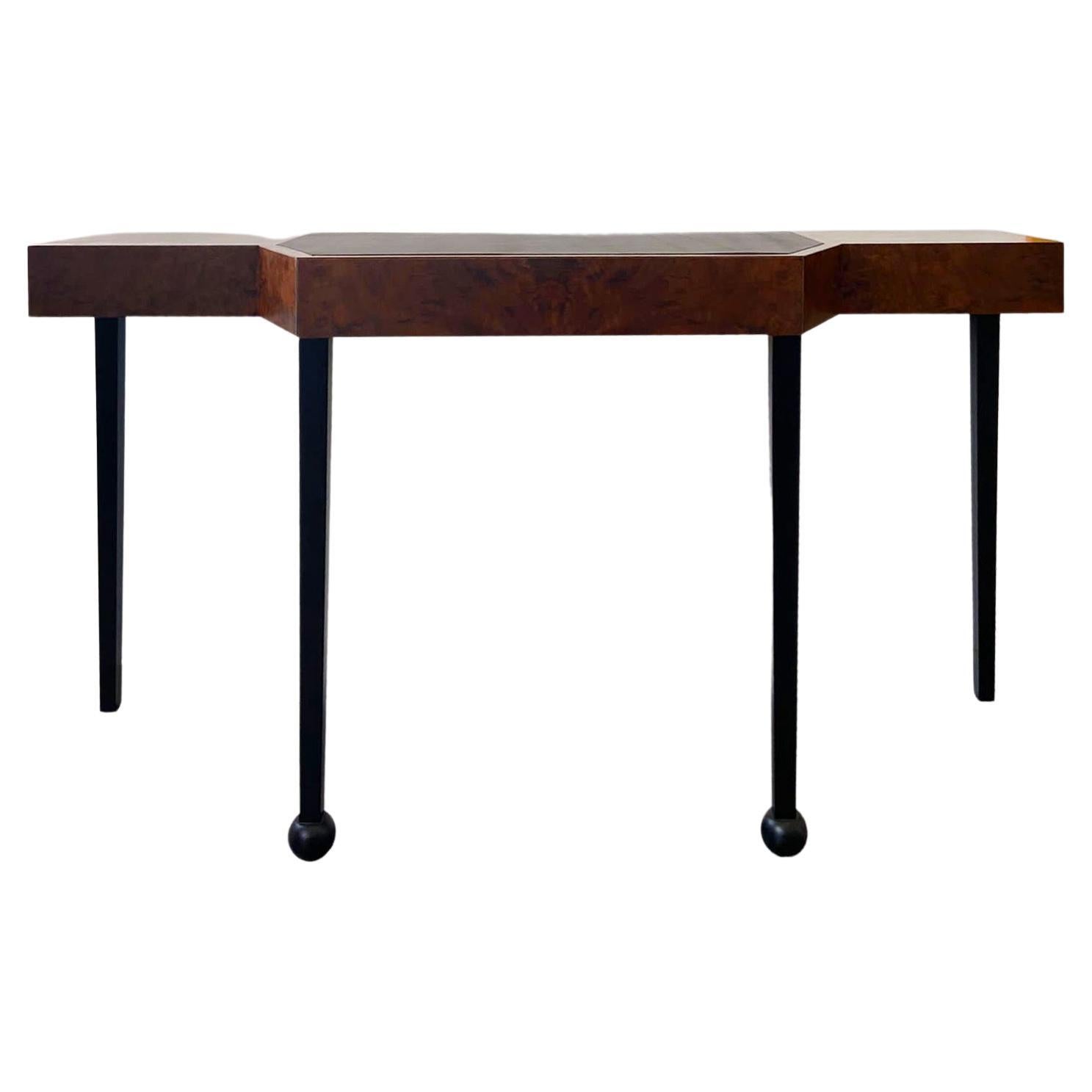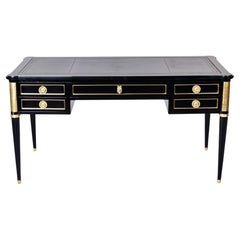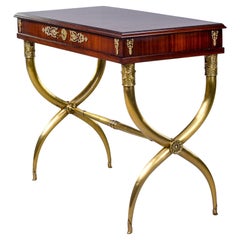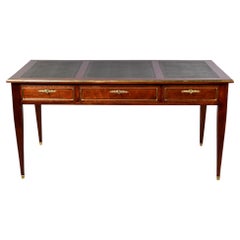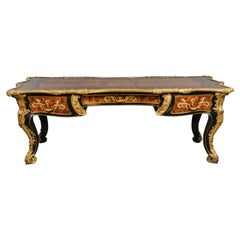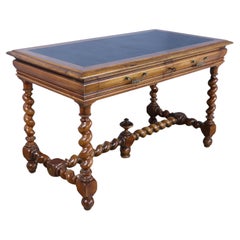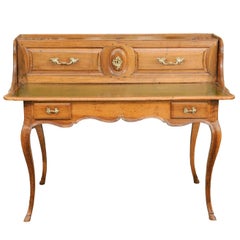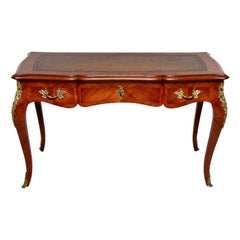
French Regence Style Walnut Desk with New Leather
View Similar Items
Want more images or videos?
Request additional images or videos from the seller
1 of 18
French Regence Style Walnut Desk with New Leather
About the Item
- Dimensions:Height: 29.75 in (75.57 cm)Width: 50.75 in (128.91 cm)Depth: 26 in (66.04 cm)
- Materials and Techniques:
- Place of Origin:
- Period:
- Date of Manufacture:1890s
- Condition:Wear consistent with age and use. Very good overall antique condition with new leather top.
- Seller Location:Troy, MI
- Reference Number:Seller: 94731stDibs: LU899918040551
About the Seller
5.0
Platinum Seller
These expertly vetted sellers are 1stDibs' most experienced sellers and are rated highest by our customers.
Established in 1990
1stDibs seller since 2010
960 sales on 1stDibs
Typical response time: 1 hour
More From This SellerView All
- 19th C Louis XVI Style Ebonised Desk with Brass Mounts and New Leather TopLocated in Troy, MIFound in France, this Louis XVI style desk dates from the 1880s. We had this mahogany desk professionally ebonised in Europe and the leather writing surfaces were also replaced. Lock...Category
Antique Late 19th Century French Louis XVI Desks and Writing Tables
MaterialsBrass
- French Restoration Style Desk on Brass Base with Lift TopLocated in Troy, MIFrench Restoration style desk on brass base with lift top desk has a brass curule style base and mahogany veneered desk with decorative brass mounts and ...Category
Early 20th Century French Desks and Writing Tables
MaterialsBrass
- Early 19th Century Louis XVI Style Large Mahogany Desk with Green Leather TopLocated in Troy, MIFound in France, this Louis XVI style mahogany desk dates from the 1830s. Generously sized at over five feet wide, this desk is finished on both sides and can float in a room. Front ...Category
Antique Early 19th Century French Louis XVI Desks
MaterialsBrass
- Art Deco Era Ebonised Desk with Stainless FrameLocated in Troy, MIFound in England, this circa 1930s Art Deco desk has a streamlined machine age / industrial style. Desk top with three functional drawers and stainless steel leg and base. Unknown ma...Category
Early 20th Century English Art Deco Desks
MaterialsStainless Steel
- Pair Early 20th C English Ebonised Side Desks with Marble TopsLocated in Troy, MICirca 1900 pair of English writing desks with single locking center drawer and newly ebonised finish. Dovetail construction. Each desk has a new black marble top with white streaks. ...Category
Early 20th Century English Desks and Writing Tables
MaterialsMarble, Brass
- Set Six Vintage French Curved Arm Walnut Chairs with New Leather UpholsteryLocated in Troy, MIFound in France, this set of six chairs dates from the 1940s. Chairs have dark-stained walnut frames with tapered legs and dramatically curved arms. Upholstered seats and backs have ...Category
Mid-20th Century French Mid-Century Modern Chairs
MaterialsBrass
You May Also Like
- Régence Style Marquetry Writing DeskLocated in Brighton, West SussexA magnificent and very rare Régence style marquetry inlaid grand bureau plat or writing desk. Inscribed to the carcass 'Moreaux 72'. Dating from the second half of the nineteenth century this magnificent and very rare bureau plat has finely cast rocaille gilt-bronze mounts and is decorated overall with truly breath-taking seventeenth century marquetry, depicting fantastical townscapes, knights, soldiers, hunting and architectural-scenes. Of serpentine rectangular form the top is veneered with superb marquetry panels within a foliate scrolled border and a rocaille shell-cast gilt-bronze surround, both sides featuring a recessed central drawer flanked on each side by a drawer applied with male and female terms, scrolled handles, and reserves with conforming drawers; the bombé sides are centred by foliate scrolls, and the whole raised on cabriole legs headed by cartouches with foliate entwined chutes terminating in scrolled sabots. Of impressive scale this fine bureau plat, in the manner of a partners desk, features working drawers to each side. This model of bureau plat was made by a small number of celebrated Parisian cabinet makers in the second half of the 19th century including Beurdeley, Cremer and Befort Jeune. It is incredibly rare to see this model of bureau plat inlaid in marquetry. The exceptional quality and style indicate the use of older reused marquetry, almost certainly dating from the late 17th century and originating from the Augsburg region of Germany. Similar models but lacking the exceptional marquetry inlay can be found in the collection of the Duke of Buccleuch at Bowhill, and the Earl of Normanton at Somerlely. Christopher Payne notes that the latter was part of a pair sold by the London dealer Toms & Luscombe in 1871. He illustrates the present bureau plat in his book ‘European Furniture of the 19th Century’ (p. 88-89), along with two related desks minus the marquetry inlay (p. 92 -93). The exceptional and highly complex marquetry inlay and intarsia work, that sets this important bureau plat apart from other extant examples, would originally have formed the decorative panels of a late 17th century table cabinet, almost certainly ascribable to the Augsburg region of Germany. Augsburg emerged from the middle of the 16th century as the German centre of luxury cabinet making for the international market. In particular, the development of marquetry contributed to this prominent position, favoured by the ready availability of indigenous woods and the reputation that Augsburg had the best craftsmen able to cut thin layers of veneers in the most intricate motifs (C.S. Wood, ‘The Perspective Treatise in Ruins: Lorenz Stöer, Geometria et perspectiva, 1567’, Studies in the History of Art, no. 59, p. 246). Table cabinets, conceived as a form of Wunderkammer or cabinets of curiosities, were intended as repositories for all manner of wondrous and exotic objects and by the 1550s the grandest cabinets in Europe were being made in Augsburg. Decorated almost entirely with sumptuous marquetry, often depicting perspective views of ruins and fantastical townscapes, they become by the 1590s highly regarded as important diplomatic gifts. Fine Augsburg marquetry panels remained popular throughout the ages and were frequently re-used to create or embellish new items of furniture, such as this magnificent bureau plat. Their inclusion was not only for their highly decorative appeal, but to contemporary eyes, a means by which to imbue a new creation with a sense of true historical authenticity. The importance of such panels is often reflected in the high cost involved in repurposing them. A fine example of this is the celebrated 17th century cabinet on stand...Category
Antique Mid-19th Century French Louis XV Desks and Writing Tables
MaterialsOrmolu
- French Walnut Barley Twist Desk with Leather TopLocated in Port Chester, NYA handsome leather topped desk or writing table with spectacular barley twist legs and support, complete with a regal finial at the center of the trestle. The walnut on this piece i...Category
Antique Mid-19th Century French Desks and Writing Tables
MaterialsLeather, Walnut
- French 1800s Louis XV Style Walnut Desk with Green Leather and Lifting PanelLocated in Atlanta, GAA French Louis XV style walnut desk from the early 19th century, with lifting panel, green leather writing surface and cabriole legs. Born in France during the early years of the 19t...Category
Antique Early 19th Century French Louis XV Desks and Writing Tables
MaterialsWalnut, Leather
- French 19th Century Regence Style Rosewood, Ormolu and Brass DeskLocated in West Palm Beach, FLAn extremely elegant French 19th century Regence st. rosewood, ormolu and brass desk. The desk is raised by beautiful cabriole legs with most decorative flutes, fitted brass chandell...Category
Antique 19th Century French Desks and Writing Tables
MaterialsBrass, Ormolu
- French Kingwood Bureau Plat, 19th Century, Regence-Style with Leather TopLocated in Houston, TXThis desk is 19 th century and has the original aged patina. The writing surface is rectangular and has a new black leather With gilt accents that has been added to the top. The w...Category
Antique Late 19th Century French Regency Desks and Writing Tables
MaterialsLeather, Kingwood
- French neoclassical style writing desk with leather topLocated in Swedesboro, NJCarved wood. Leather top. 31" h x 51 1/4" w x 28" d. Condition Scratches. Paint loss. Stains to leather. Minor dents in edges.Category
Vintage 1930s French Neoclassical Revival Desks and Writing Tables
MaterialsLeather, Walnut


